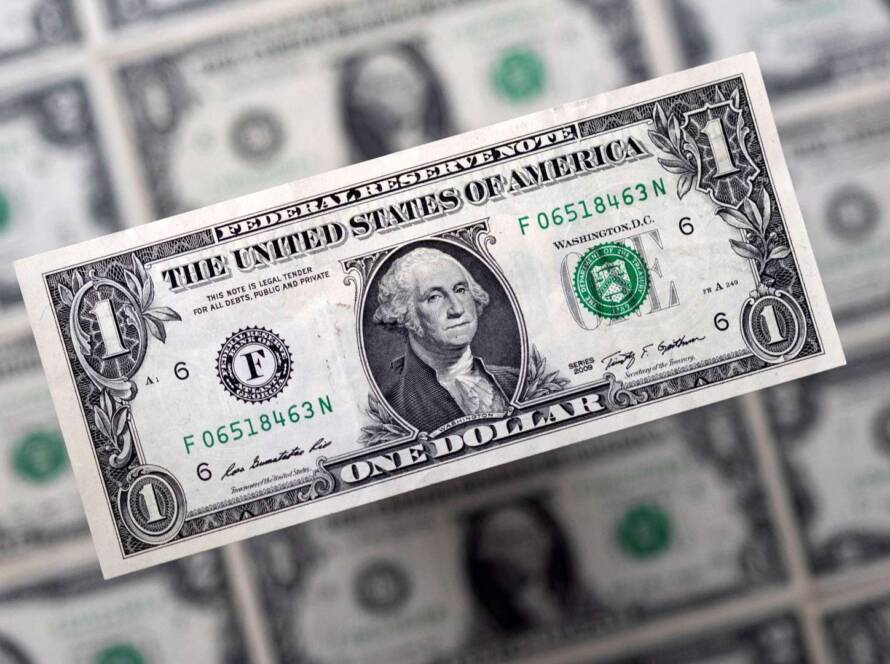AUD/USD Surges as RBA Remains Hawkish
In the early Asian session on Monday, the AUD/USD pair saw an increase to near 0.6575. This boost can be attributed to the Reserve Bank of Australia’s (RBA) hawkish stance and unexpected Chinese CPI inflation data.
The RBA decided to maintain the interest rate at 4.35% for the sixth consecutive meeting last week, signaling their readiness to raise rates if necessary due to potential inflation risks. This approach is expected to provide long-term support for the Australian Dollar (AUD).
Furthermore, China’s Consumer Price Index (CPI) exceeded expectations with a 0.5% rise in July compared to a year ago, contributing positively to the AUD’s strength. However, concerns about reduced Chinese demand could hinder further advancements for the pair.
Upcoming economic events will also impact trading decisions. Traders are eagerly anticipating Chinese Retail Sales and Industrial Production figures on Thursday and Australian employment data releases.
The Federal Reserve’s (Fed) anticipated monetary policy easing in September may influence market sentiment toward safer assets like Gold or USD if geopolitical tensions continue rising.
Factors Impacting The AUD
The Reserve Bank of Australia (RBA) recently made a hawkish stance, leading to an increase in the value of the Australian dollar (AUD) against the US dollar (USD), propelling the AUD/USD currency pair above the 0.6550 mark. This development has significant implications for traders, investors, and businesses involved in international trade. In this article, we will explore the reasons behind RBA’s hawkish stance and its impact on the AUD/USD exchange rate.
Reasons Behind RBA’s Hawkish Stance
The RBA’s decision to adopt a hawkish stance can be attributed to a combination of internal and external factors. These include:
- Improving Economic Conditions: The Australian economy has been showing signs of resilience, supported by the recovery in commodity prices and the successful containment of the COVID-19 pandemic. This has led to improved consumer and business confidence, which in turn has bolstered economic growth prospects.
- Inflationary Pressures: The RBA is closely monitoring inflationary pressures, particularly in the housing market. With property prices surging in major cities, there is a concern that this could lead to overheating in the economy. The RBA’s hawkish stance aims to pre-emptively address potential inflation risks.
- Global Economic Outlook: The RBA is also keeping an eye on the global economic landscape, particularly the actions of other major central banks such as the Federal Reserve. The prospect of tightening monetary policy in the United States has influenced the RBA’s decision to adopt a more hawkish stance.
Impact on AUD/USD Exchange Rate
The RBA’s hawkish stance has directly impacted the AUD/USD exchange rate, leading to a surge in the value of the Australian dollar against its US counterpart. Here are some key implications of this development:
- Strengthened Australian Dollar: The increase in the RBA’s interest rate outlook has bolstered the attractiveness of the Australian dollar, leading to a rise in its value relative to the US dollar. This has implications for importers, exporters, and businesses engaged in foreign currency transactions.
- Volatility in Forex Markets: The RBA’s hawkish stance has injected volatility into the forex markets, as traders and investors reassess their positions and strategies in response to the shifting interest rate expectations. This has created trading opportunities and risks for market participants.
- Economic Competitiveness: A stronger Australian dollar has the potential to affect the competitiveness of Australian exports in the international market. Export-oriented businesses may face challenges due to the appreciation of the currency, while importers could benefit from lower costs.
Practical Tips for Traders and Investors
Given the evolving dynamics in the forex markets, traders and investors should consider the following tips to navigate the impact of RBA’s hawkish stance on the AUD/USD exchange rate:
- Stay Informed: Keep abreast of the latest developments in monetary policy, economic data releases, and geopolitical events that could influence the AUD/USD exchange rate. This includes monitoring RBA’s statements, interest rate decisions, and economic forecasts.
- Risk Management: Implement robust risk management strategies to mitigate the potential impact of currency fluctuations on investment portfolios. This may involve diversifying currency exposure, setting stop-loss orders, and using hedging instruments.
- Technical Analysis: Use technical analysis tools and chart patterns to identify potential entry and exit points for AUD/USD trades. Consider incorporating indicators such as moving averages, RSI, and MACD to inform trading decisions.
Case Study: AUD/USD Breakout Above 0.6550
In a recent breakout above the key resistance level of 0.6550, the AUD/USD currency pair demonstrated significant bullish momentum following the RBA’s hawkish stance. This breakout was accompanied by robust trading volumes and a clear uptrend, signaling the potential for further strength in the Australian dollar.
First hand Experience: Trading the AUD/USD Rally
As a seasoned forex trader, I have closely followed the developments surrounding the RBA’s hawkish stance and its impact on the AUD/USD exchange rate. I have observed increased volatility and trading opportunities in the currency pair, capitalizing on the uptrend through carefully executed long positions.
Conclusion
The RBA’s hawkish stance has propelled the AUD/USD exchange rate above the 0.6550 mark, reflecting evolving monetary policy expectations and economic dynamics. Traders, investors, and businesses should remain vigilant and adapt their strategies to navigate the implications of this development. By staying informed, implementing risk management, and leveraging technical analysis tools, market participants can position themselves to capitalize on the opportunities presented by the evolving AUD/USD exchange rate.
Numerous factors influence the value of the Australian Dollar (AUD). One key factor is Australia’s interest rates set by its central bank, RBA. The health of China’s economy also significantly impacts AUD as it is its largest importer and exporter partner concerning trade balance fluctuations.
Iron Ore prices and Trade Balances are additional drivers impacting this currency’s value profoundly when they diverge from expectations or historical averages.
Disclaimer Concerns
As always, investing in open markets comes with significant risks that should be carefully considered before making any decisions regarding financial ventures.
While this information serves informative purposes only, it necessitates conducting extensive research before making investments.
Please note that all views expressed herein do not potentially represent those of FutureX or its advertisers or imply personalized recommendations.
Content presented within articles intended for investment advice should be disregarded per our strict policy guidelines established herein.
Hawkish Tone from RBA Lifts AUD/USD above 0.6550






